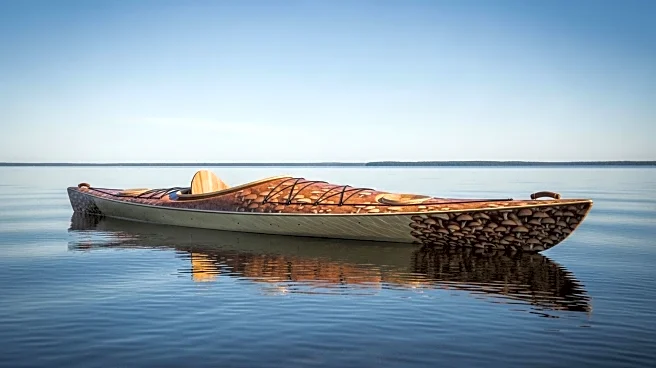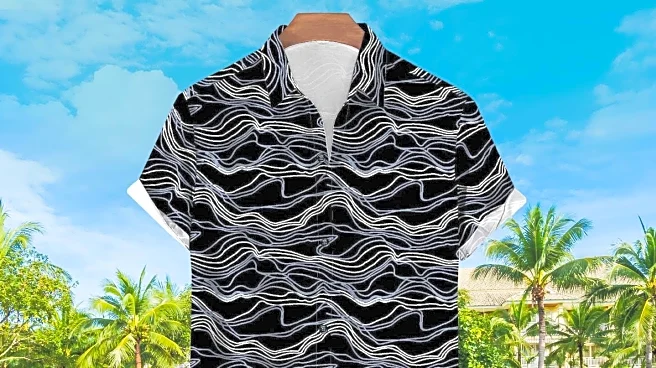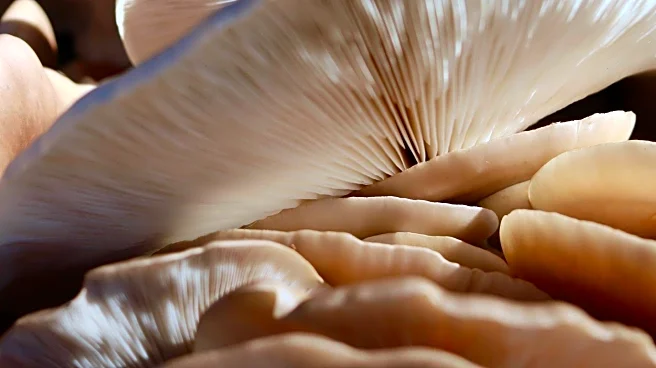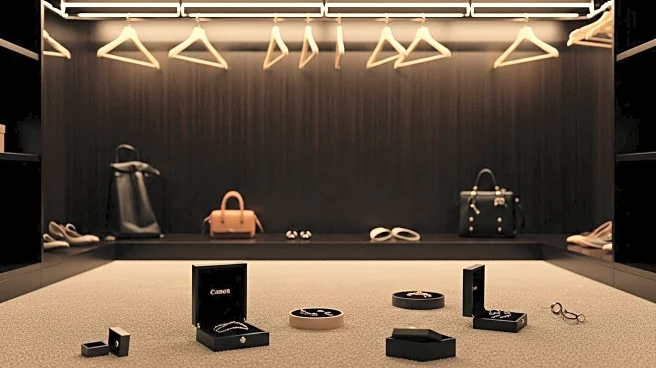What is the story about?
What's Happening?
Sam Shoemaker, an artist and mycologist, successfully completed a 26.4-mile journey across open water in a kayak made entirely from mushrooms. Launching from Catalina Island, Shoemaker paddled to San Pedro, California, marking the longest open-water journey in a mushroom-based kayak. The kayak, grown from mycelium, represents a potential environmentally-friendly alternative to traditional plastic materials used in aquatic recreation. Shoemaker's work is part of a broader exploration into fungal innovation, with mycelium-based materials being considered for various applications, including furniture and biomedical equipment. His mentor, Phil Ross, co-founder of MycoWorks, has been instrumental in developing these materials, which are biodegradable and possess similar properties to plastics.
Why It's Important?
Shoemaker's successful voyage highlights the potential of mycelium-based materials as sustainable alternatives to plastics, which are prevalent in many industries. This innovation could significantly reduce environmental impact, particularly in aquatic environments where plastic pollution is a major concern. The development of biodegradable materials like AquaFung could lead to a shift in manufacturing practices, benefiting ecosystems and reducing reliance on harmful plastics. Artists and scientists are at the forefront of this movement, demonstrating the intersection of art and science in driving environmental change. The success of Shoemaker's kayak may inspire further research and adoption of fungal materials in various sectors.
What's Next?
Shoemaker plans to continue collaborating with artists, scientists, and hobbyists to advance the use of mycelium-based materials. He aims to make his research and methodologies publicly available, encouraging others to explore and innovate with fungal materials. An exhibition showcasing his work will be held at Fulcrum Arts in Pasadena, potentially sparking further interest and investment in sustainable material development. As awareness grows, more institutions may begin to take fungal innovation seriously, potentially leading to broader adoption and commercialization of these materials.
Beyond the Headlines
The use of mycelium-based materials raises ethical and cultural questions about sustainability and the role of art in scientific innovation. As these materials gain traction, they could challenge traditional manufacturing processes and consumer habits, promoting a more sustainable lifestyle. The collaboration between artists and scientists exemplifies a shift towards interdisciplinary approaches in solving environmental issues, potentially influencing educational and research priorities.
AI Generated Content
Do you find this article useful?















